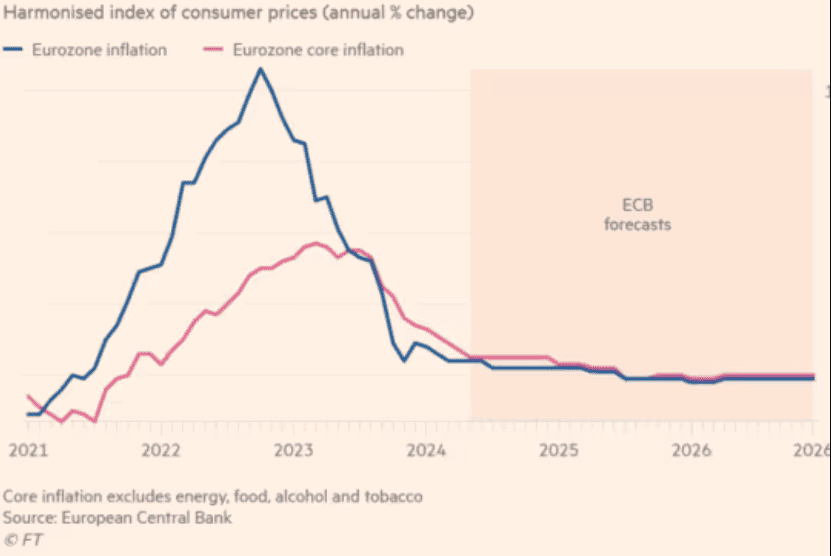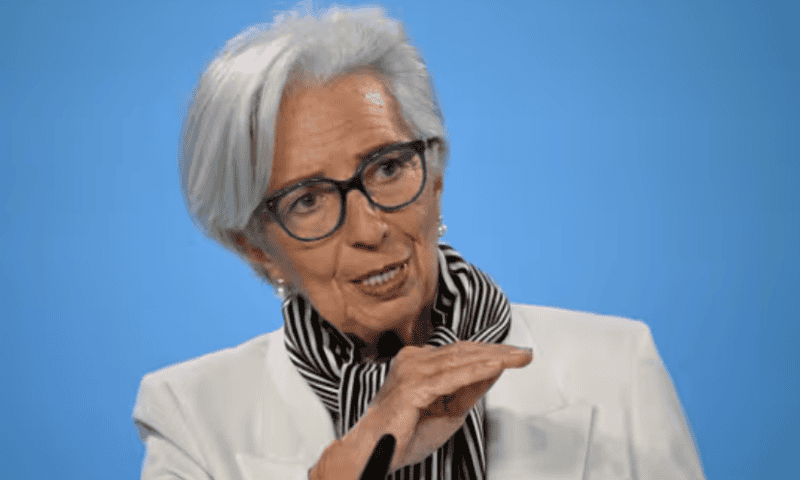Philip Lane brushed off fears that loosening eurozone monetary policy before U.S. Fed could backfire
“Barring major surprises, at this point in time there is enough in what we see to remove the top level of restriction.”
— Philip Lane, ECB chief economist
The European Central Bank will likely cut interest rates from historic highs at its meeting on June 6th, suggested its chief economist, Philip Lane, in an interview with the Financial Times on Monday. And he brushed off fears that doing so before the U.S. Federal Reserve could backfire.
Investors are betting that the ECB will lower its benchmark deposit rate by a quarter percentage point from its record high of 4% at next week’s meeting after eurozone inflation fell close to the bank’s 2% target.
Eurozone inflation has fallen from above 10% at its peak in 2022 to a near three-year low of 2.4% in April.
Swiss, Swedish, Czech and Hungarian central banks have already reduced interest rates this year as inflation has fallen, but the Fed and Bank of England are not expected to cut rates before the summer, and the Bank of Japan is considered likely to continue raising them.
Lane added that inflation had fallen faster in the eurozone than the U.S. because the region had been hit harder by the energy shock triggered by Russia’s invasion of Ukraine in 2022.
“But in terms of that first step [in starting to cut rates] that is a sign that monetary policy has been delivering in making sure that inflation comes down in a timely manner. In that sense, I think we have been successful.”

However, Lane said ECB policymakers needed to keep rates in restrictive territory this year to ensure that inflation kept easing, and did not get stuck above the bank’s target, which he warned “would be very problematic and probably quite painful to eliminate”.
He said the pace at which the central bank lowered eurozone borrowing costs this year would be decided by assessing data to decide “is it proportional, is it safe, within the restrictive zone, to move down”.
“Things will be bumpy and things will be gradual,” said Lane, who will draft the proposed rate decision before it is decided by the 26 members of the governing council next week.
“The best way to frame the debate this year is that we still need to be restrictive all year long,” he added. “But within the zone of restrictiveness we can move down somewhat.”
Despite recent data showing eurozone wage growth picked up to a near-record pace at the start of this year, Lane said “the overall direction of wages still points to deceleration, which is essential,” adding that this was backed up by the ECB’s own wage tracker.
If the ECB diverges from the Fed by cutting interest rates more quickly it could cause the euro to fall and push up inflation by raising import prices, but Lane said the ECB would take any “significant” exchange rate move into account. He noted that “there has been very little movement” in this direction so far. The euro EURUSD, 0.13% has risen recently against the U.S. dollar from a six-month low in April.
Lane also said that the “still significant amount of cost pressure” coming from rapid wage growth pushing up service sector prices meant that the ECB would have to keep policy restrictive until 2025.
“Next year, with inflation visibly approaching the target, then making sure the interest rate comes down to a level consistent with that target − that will be a different debate,” he said.

